Fact or Fiction: Do Current Seahawks Compare Favorably to 2012 Iteration?
Only a decade ago, the Seahawks assembled one of the greatest draft classes in modern NFL history. Landing two future Hall of Famers and a trio of other quality starters in the process, that group proved instrumental in their sustained success over the next 10 years, as the franchise made eight playoff appearances and won their only Super Bowl.
This time next week, general manager John Schneider and coach Pete Carroll hope to replicate that magic in Las Vegas.
Despite trading away quarterback Russell Wilson and releasing linebacker Bobby Wagner, the two biggest stars to come from that renowned 2012 class, Schneider and Carroll told reporters on Thursday there's been a renewed energy and enthusiasm at the VMAC this offseason. In fact, Schneider wasted little time drawing comparisons between where the franchise is headed now and where they were a decade ago at this time.
"I don't almost want to sound like I work out all the time," Schneider laughed. "But I was getting a workout in yesterday morning watching TV, and they were talking about the NFC West and all the problems it has and everything. It just brought me back to this energy of the 2012 draft."
From there, Schneider revisited what the so-called experts were saying when they panned Seattle's draft class that year. As is the nature of instant reactions, many pundits ripped the organization for failing to address needs and reaching for several players earlier than they should have. Infamously, Bleacher Report gave them a big, fat F grade, something the players from the class never forgot.
"We ‘over-drafted’ a pass rusher, and we drafted a linebacker that didn't have any instincts, we drafted a quarterback that didn't fit the height mold, we ‘over-drafted’ a nickel back, ‘over-drafted’ a third down back, and we converted a defensive lineman into an offensive lineman who was still playing for those who were keeping track, or was last year. Then afterwards everybody was giving us Fs," Schneider recalled. "The message is that in this building, we were super excited. We knew where we were headed. Pete and his staff had a great plan. It was loaded with competition and we're excited to see that competition."
Back in the present, Schneider sees a lot of parallels between the current Seahawks and the 2012 iteration, and it goes beyond the energy in the building. Thanks to the Wilson trade, while the Jets hold their original first rounder, they have a top-10 pick for the first time since 2010 and hold four picks in the first 72 selections. Back in 2012, they originally were slated to pick 12th after a 7-9 season and had three picks in the first 65 selections.
Armed with similar draft ammunition, Schneider and Carroll both see a prime opportunity to infuse their roster with young talent as they did a decade ago and believe they have a plan in place to put Seattle back into position to consistently contend in the NFC West.
Does Schneider have a valid point conjuring up comparisons to 2012? Playing a game of FACT or FICTION, here's a look at how the current makeup of the Seahawks compares and contrasts to its predecessor from a decade earlier.
FACT: Like 2012, the Seahawks are in dire need for a franchise quarterback
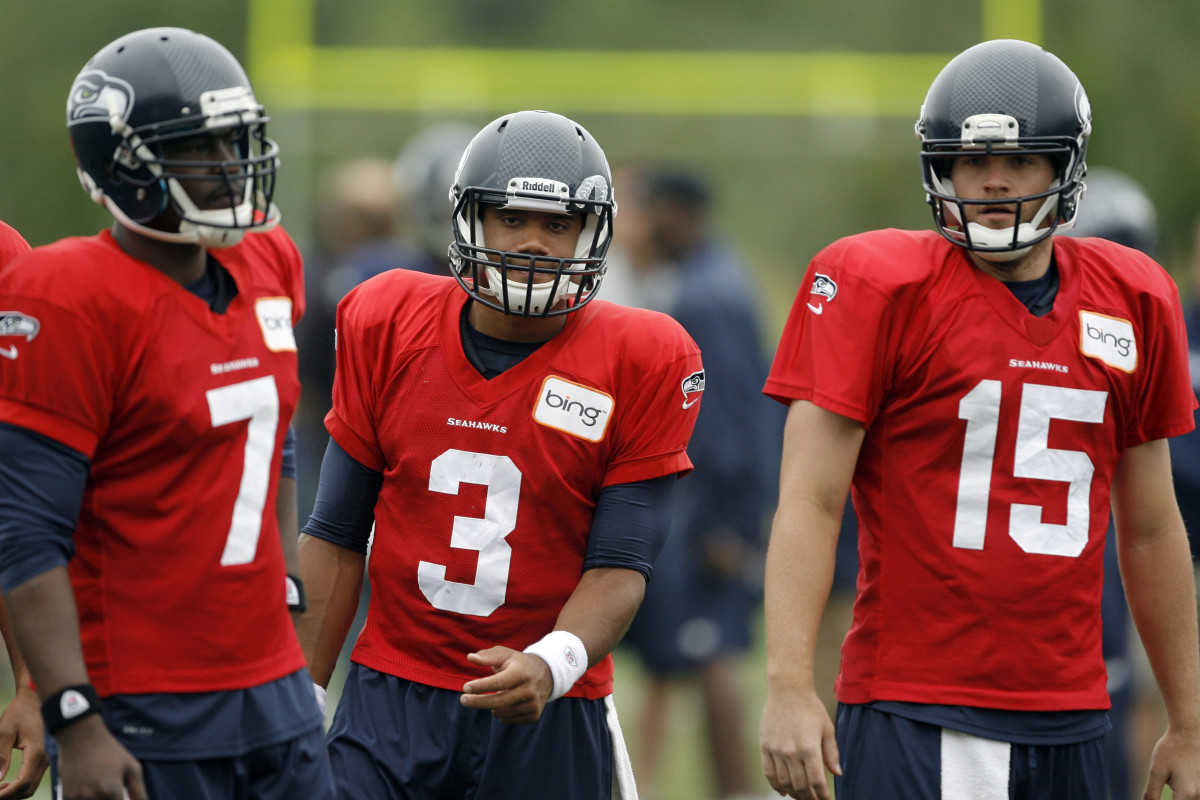
After mutually splitting up with long-time starter Matt Hasselbeck, the Seahawks went into training camp in 2011 with journeymen Tarvaris Jackson and Charlie Whitehurst competing to take over as the starter. Not surprisingly, while Jackson fought through a pectoral injury and played fairly well at times, neither signal caller had the goods to help their team improve in the record column and they finished with a 7-9 record for a second straight year.
Understanding Jackson wasn't the long-term answer, Seattle signed former Green Bay backup Matt Flynn to a three-year deal in free agency believing he would bring much-needed stability to the position. Instead, third-round pick Russell Wilson wasted little time winning the job in training camp and the preseason, earning the starting nod for Week 1 over Flynn and Jackson.
Looking at the present, there are certainly some parallels with the quarterback situation compared to 2012, though it can be argued the current group compares more favorably to 2011. Bringing Drew Lock in as part of the trade sending Wilson to the Broncos to compete against Geno Smith conjures up memories of Whitehurst and Jackson competing to start. Neither has a winning record as a starter in the NFL and failed to stick as second-round picks with their original team.
If Seattle drafts a quarterback such as Cincinnati's Desmond Ridder or Mississippi's Matt Corral to turn the competition into a three-way battle in training camp, however, then the story sets up to potentially be written just like 2012. In that case, Lock may be Flynn 2.0 coming on board and Smith will be Jackson as the most seasoned returning veteran who knows the offense inside and out. Schneider will be hoping whichever rookie they pick can come close to being as impactful as Wilson.
FICTION: Seattle lacks the young, ascending core of its 2012 predecessors
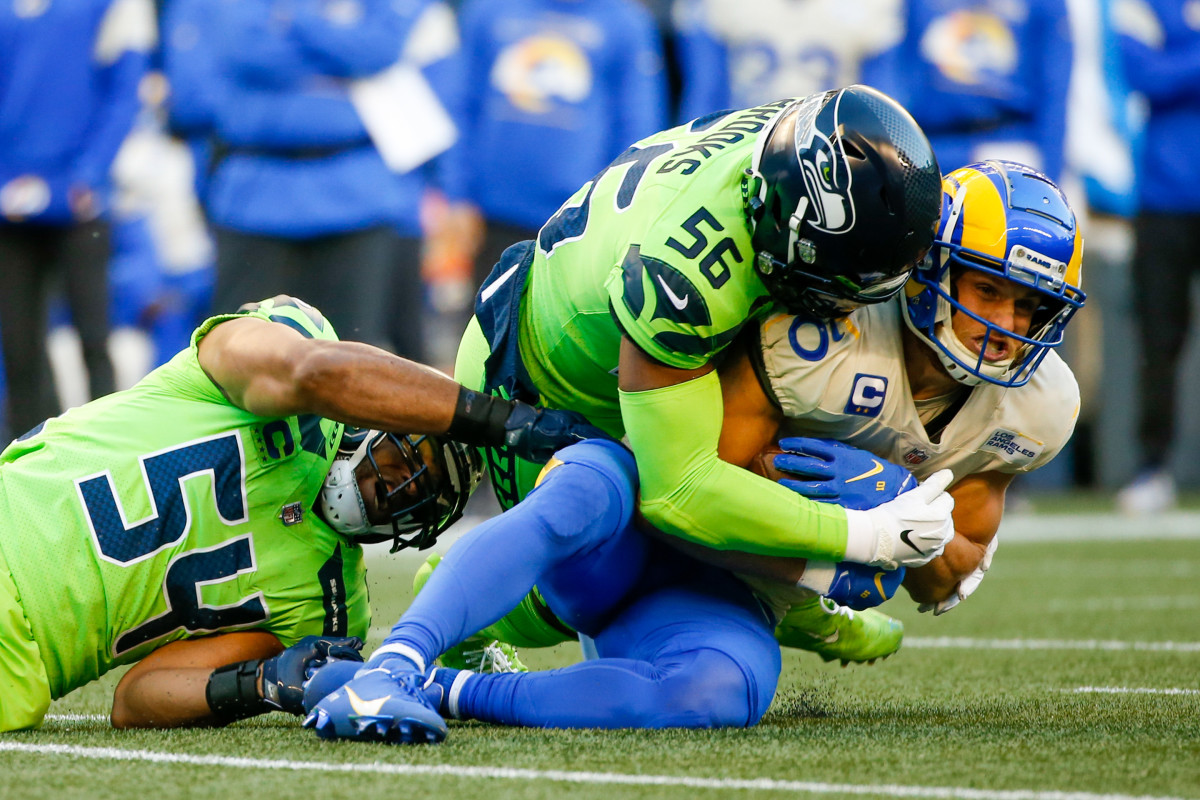
While Wilson's rapid ascendance provided the biggest missing piece for Seattle at the most important position in the game, Carroll and Schneider for the most part already had a roster ready-made to compete after strong 2010 and 2011 drafts and a couple of shrewd trades.
On offense, the Seahawks had one of the best feature backs in the league in Marshawn Lynch and an intriguing pair of young receivers in Golden Tate and Doug Baldwin. Led by center Max Unger and tackle Russell Okung, the offensive line was one of the NFC's most underrated units. All five of the aforementioned players were under the age of 25 at the time and there was a good blend of upside and experience on that side of the ball away from quarterback.
Defensively, the "Legion of Boom" had already began to inflict terror on opposing quarterbacks with safeties Earl Thomas and Kam Chancellor as well as cornerbacks Richard Sherman and Brandon Browner dominating in the secondary. Linebacker K.J. Wright and defensive end Chris Clemons were coming off strong 2011 campaigns and both under contract for at least the next two years. With the exception of Clemons and Browner, most of the unit featured starters under 25.
In the present, Seattle does have a few players under the age of 25 who may offer similar promise. Linebacker Jordyn Brooks had a franchise-record 184 tackles in 2021, while edge rusher Darrell Taylor had 6.5 sacks coming off a leg injury and guard Damien Lewis has flashed at times in his first two seasons. Receiver DK Metcalf turned just 24 in December and already has emerged as one of the game's best wideouts, while Dee Eskridge could still be an impactful player if he bounces back from a rough rookie year.
With that said, Metcalf stands out as the only player from that group who has made a Pro Bowl or earned an All-Pro selection to this point. While Brooks, Taylor, or Eskridge have the power to change the narrative in coming seasons, overall, the roster lacks the proven game-changing young talent that the 2012 team did.
FACT: Linebacker and EDGE stand out as two missing pieces on Seattle's defense
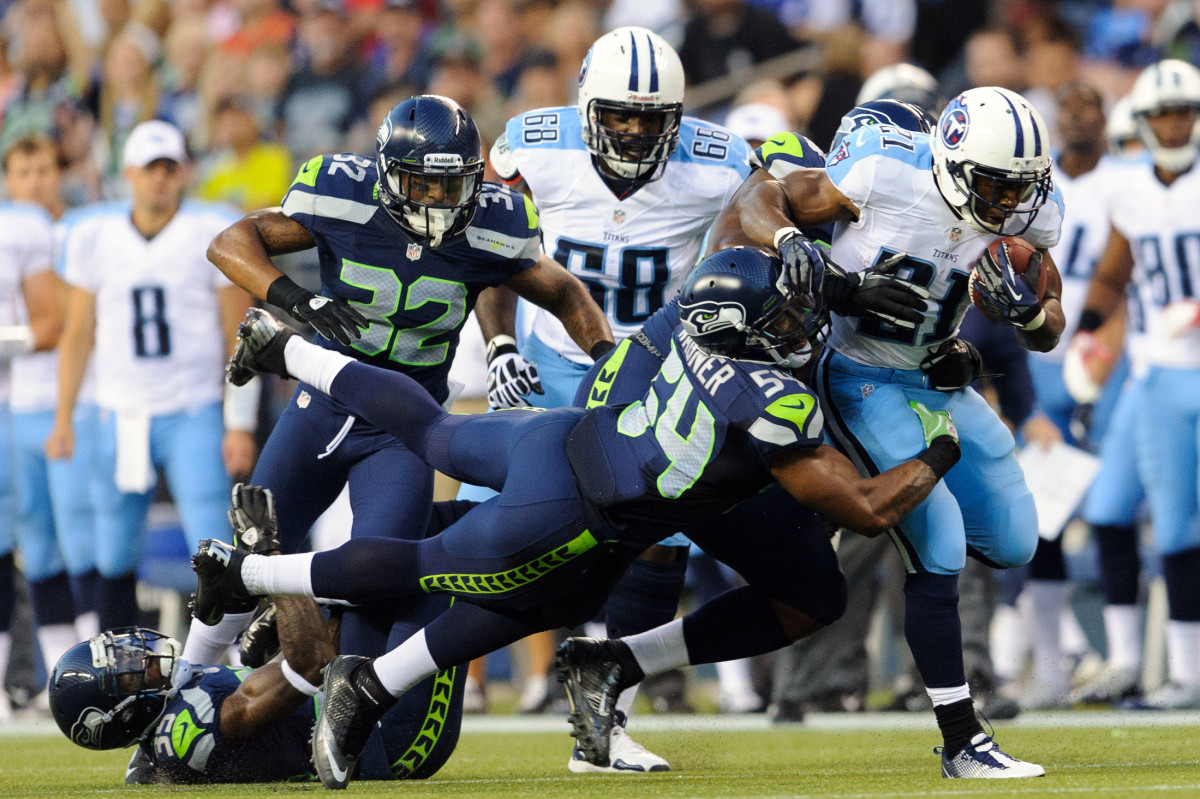
Much like the quarterback situation on offense, Seattle had a big hole to fill finding a new quarterback for the defense heading into the 2012 draft. After three stellar seasons manning the middle, David Hawthorne left in free agency to sign a three-year deal with New Orleans, making the position a top priority. Away from Clemons, the team lacked depth in the pass rushing department as well.
Swiftly addressing both of those needs, Schneider shocked many by selecting West Virginia defensive end Bruce Irvin 15th overall in the first-round, a move that generated criticism from most experts. Then with the 47th selection one round later, they tabbed Utah State's Bobby Wagner as the heir apparent for Hawthorne. Making an instant impact, Irvin recorded 8.0 sacks as a rookie, while Wagner started 15 games and surpassed 100 tackles. With their arrival, the Seahawks plugged their two most glaring needs, giving them star talent at all three levels of their defense.
Looking at the current incarnation, after releasing Wagner and the trio of Carlos Dunlap, Kerry Hyder, and Benson Mayowa this offseason, the Seahawks find themselves in a similar predicament from a needs standpoint. Cody Barton may be a better fallback option than they had for Hawthorne at the time and played well in limited action replacing Wagner last season, but the jury remains out on whether he's a full-time starter in the league. Taylor and Uchenna Nwosu, who the team signed in free agency, could be a productive one-two punch rushing off the edge, but there is minimal depth behind them.
Luckily for Seattle, this year's incoming draft class looks to have plenty of talent and depth at both positions. While they may not find the second-coming of Wagner and don't necessarily need to with Brooks emerging as one of the best young linebackers in the NFL, they will have a chance to bolster that group while adding at least one edge rusher, potentially picking a player at both spots early like they did in 2012.
FICTION: Seattle has far more holes to fill on both sides of the ball than it did in 2012
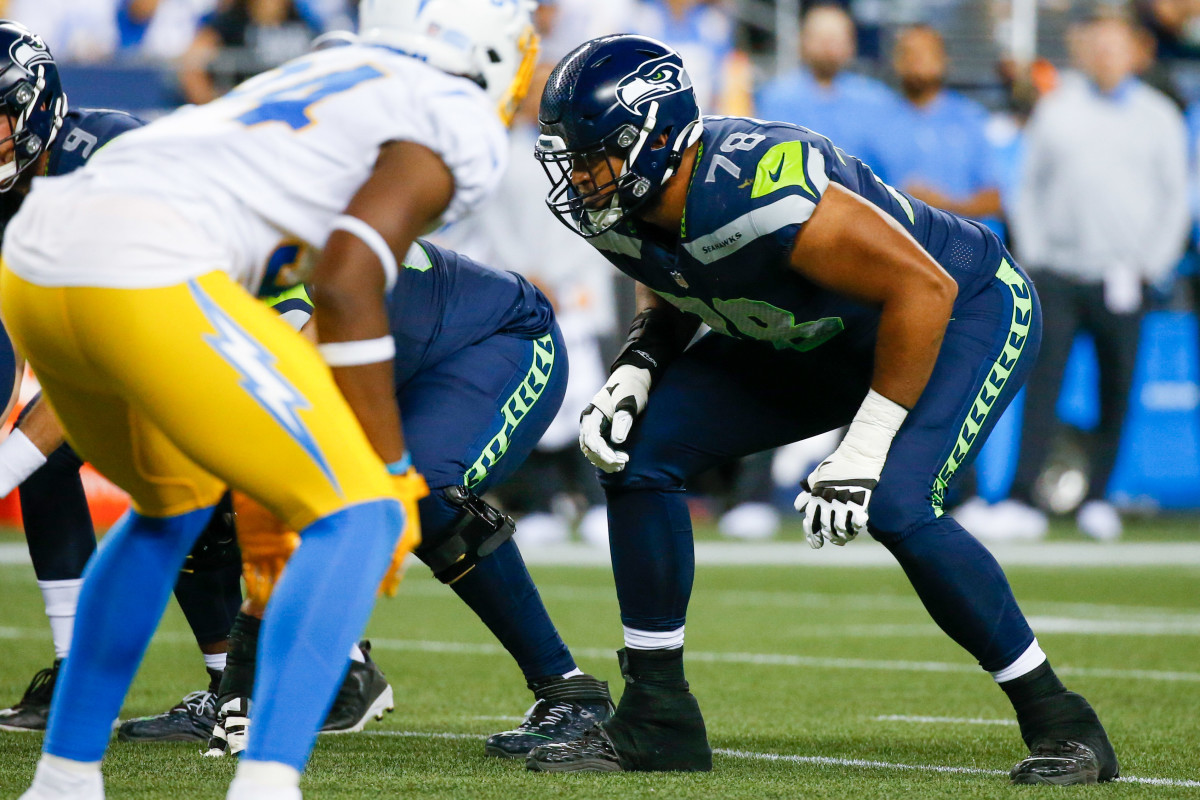
If there's truly a stark difference between the state of the current Seahawks and the 2012 squad heading into the draft, Schneider and Carroll don't have a roster to work with that is only a few pieces away from contending. Both sides of the ball are littered with position groups that could use an upgrade, complicating their plan a bit as they try to prepare for the draft.
On offense, Seattle has only three tackles currently under contract with former starters Duane Brown and Brandon Shell remaining unsigned. From that group, only Jake Curhan, who started five games in place of Shell at right tackle as a rookie late last year, has played more than 15 snaps on offense in a game. 2021 sixth-round pick Stone Forsythe and Greg Eiland have played a combined 14 snaps, with the latter never even dressing for a game.
In the interior of the line, the Seahawks signed former Rams starter Austin Blythe as a replacement for Ethan Pocic, reuniting him with offensive coordinator Shane Waldron and line coach Andy Dickerson. But the ex-Nebraska standout was added on a cheap one-year deal after battling injuries with the Chiefs last year and may not be seen as a long-term starter at center either.
Flipping to the defensive side of the football, Seattle lost starting cornerback D.J. Reed in free agency and Tre Brown may not be ready to return for the start of training camp coming off a patellar tendon injury in his knee. This would leave incumbent Sidney Jones and newcomer Artie Burns as the top two defenders on the depth chart playing on one-year contracts, casting questions both short and long-term at the position. As mentioned earlier, linebacker and EDGE also remain glaring needs.
FACT: Seattle has foundational pieces in place with star veterans under contract
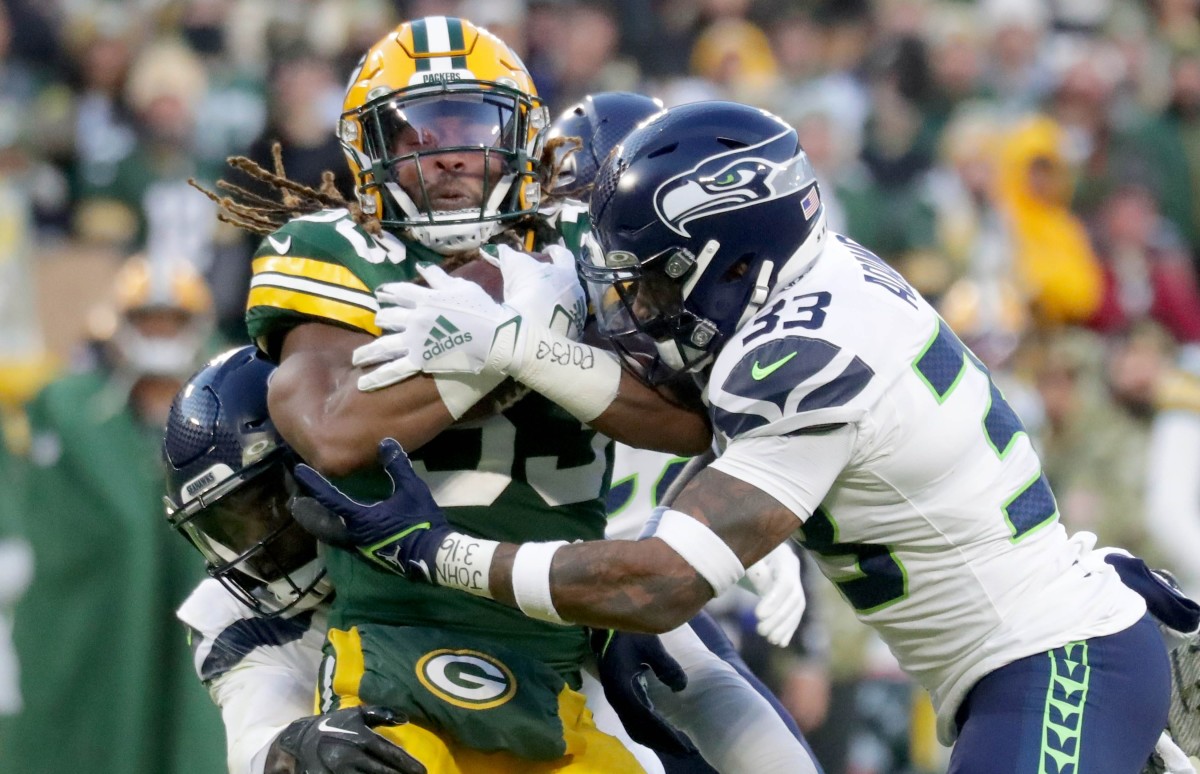
While it's truly an exercise comparing apples to oranges, particularly with a new CBA being signed a few years ago that changed how teams handle the salary cap, the Seahawks do have plenty of returning talent on their current roster like the 2012 group did. The big difference, of course, is that most of those players are established veteran stars who recently signed second contracts with the organization.
On offense, regardless of who winds up taking snaps under center next year, Lock, Smith, or a rookie quarterback couldn't ask for much better of a supporting cast on the outside. Tyler Lockett has posted three straight 1,000-yard seasons and somehow remains one of the most underrated wideouts in the league, while Metcalf became only the seventh receiver ever to surpass 214 receptions, 3,100 receiving yards, and 29 touchdowns in his first three seasons. Behind them, Eskridge and Freddie Swain provide quality third/fourth receiver options. At tight end, Noah Fant could be a game changer playing in a scheme that fits his strengths, while running backs Rashaad Penny and Chris Carson can be top-10 backs when healthy.
Set to undergo a significant scheme change to a 3-4, the Seahawks will have multiple proven stars on the field to help ease that transition. After earning his first All-Pro vote, Brooks looks poised to take another big leap in his third season. In the secondary, safeties Quandre Diggs and Jamal Adams both have multiple Pro Bowls on their resumes and are now signed through 2024. Up front, the organization is fired up about Taylor's upside and the 25-year old Nwosu could emerge as a free agent steal after posting 40 quarterback pressures for the Chargers last season.
In comparison, Seattle doesn't have a core of players that matches up to Sherman, Thomas, Chancellor, and Wright in the youth department. But the franchise does have enough star power in place to climb back into contention quickly if the front office can hit on several of their draft picks later this month.
